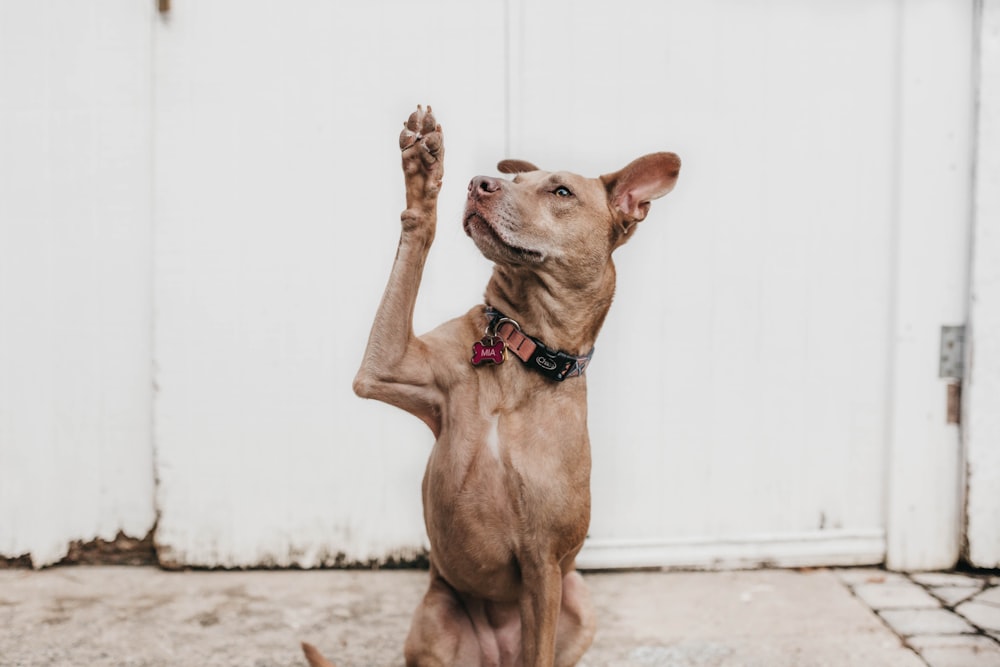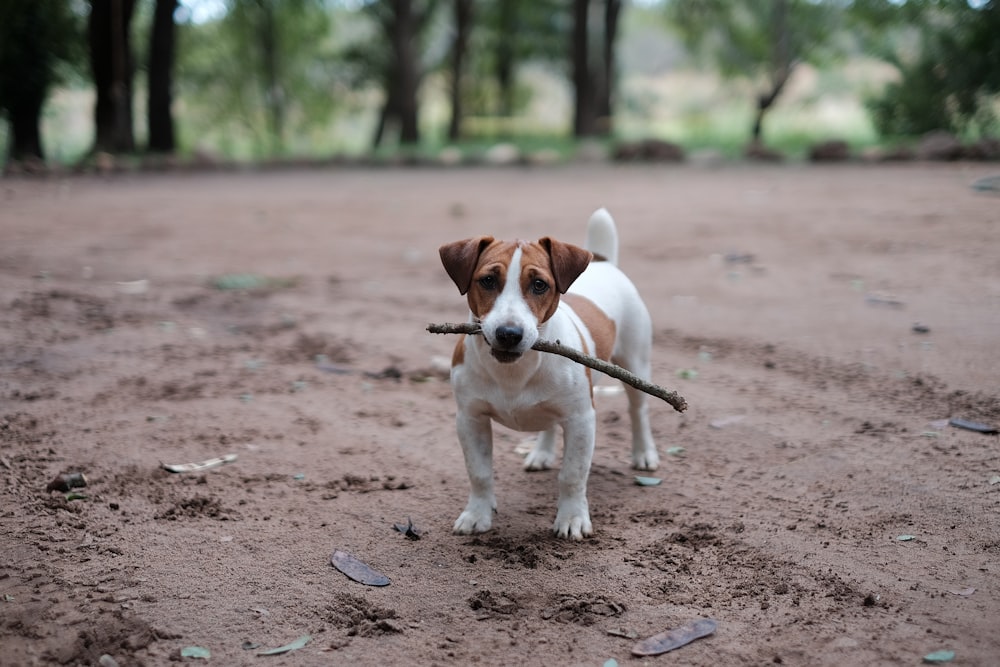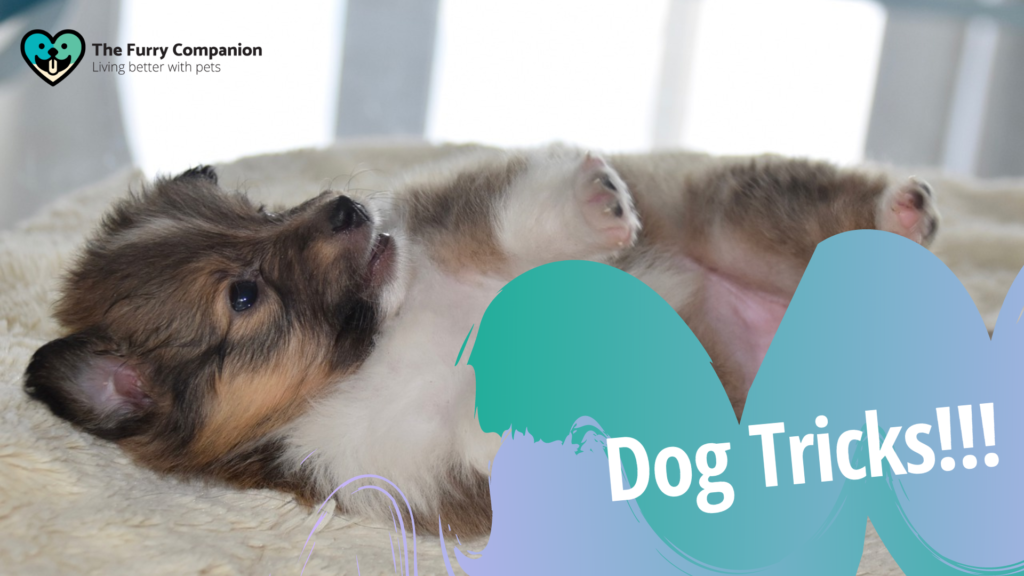No matter the size of a pet dog, they are always irresistible when they perform dog tricks. Audiences of this fluffy spectacle only witness the neat and cute tricks. However, they do not see the actual work put in the learning and training process of the pups. The Furry Companion is here to shine a light on the back-end work of dog tricks.
Sometimes it starts with the basics, the crowd favorites, like shake, play dead, and roll over. Playful learning may develop into easy dog tricks like fetch and speak, for instance. On an advanced level, dogs perform newer dog tricks like hug, kiss, and take a bow.
Aside from our furry friends, there is another matter we must address before we actively train our dogs. A crucial factor in a dog trick performance is the trainer. Dog trainers or people working for dog obedience schools receive adequate training and regular practice. In the case of ordinary dog owners, on the other hand, most of them have not received any formal training. They rely on friends’ tips and advice, videos, and online materials.
Teaching dog tricks helps both the master and his furry friend. Dog tricks bring humans a form of joy. For our pet pals, it is no easy feat receiving such instruction and performing a repetitive practice. These are the benefits we get from training dog tricks:
- Your pet dog’s mental stimulation
- Closer bond with your pet
- Alternative exercise for both parties
It is not all fun and games, however. Some skills require strenuous physical activity and mental toughness.
Table of Contents
What the Master Should Master
Before dogs learn tricks, their handlers should master a few skills of their own. The following are fundamental principles for successful dog training. The Furry Companion confers these main principles are not as challenging to obtain as you would think. They are generally easy to understand, harder to translate in dog terms, yet possible to achieve.
Patience
Every ordinary dog owner attempting to teach their dog tricks must master this value first. Although patience is a fundamental principle to learn for all kinds of people and professions, dog parents don’t always take it to heart. Patience allows us to become understanding and empathetic toward others without bursting into irritability and annoyance. Melissa Nelson, DVM, PhD adds “Losing patience with your dog can cause them to be confused.”

In some cases, people don’t practice it. However, it is essential to condition your mindset if you are a dog owner aspiring to teach your dog new tricks. They are not like people. Dog lovers must know how sensitive these creatures are.
If you ever find yourself in an impatient and hot-headed state, best not to push your limits when training your dog. As a dog trainer, you must practice patience, as well as exercises that can calm your temper. While training your dog, never raise your voice or hand to harm them. It is not because they will bite you. Hurting them discourages them and gives them a reason not to trust you.
Repetition

Remember when you were studying for a test? Isn’t memorizing the lesson easier when you repeat it more frequently? Similar to the given situation, dogs also pick up this learning strategy.
Experts and experienced dog trainers advise owners to train their dogs at most 10 minutes per session. Dedicating 10 minutes of your day, coupled with revered patience for your doggo, is not so bad. This short exercise works better if you focus on one trick for a couple of days before moving on to the next.
Focusing on a single trick for 10 minutes enhances your dog’s memory and motor skills, as well. Repetition helps them master the technique and the cues needed to perform a dog trick. Practice makes perfect, even for our litter woofers.
The Art of Giving Treats
A strategy that has dramatically helped dog trainers is incentives. You must prove to them they will be getting something relevant in return for their magnificent performances. Check this wonderful dog treat.
Like humans, they look for the incentives they appreciate. Instead of chasing after a raise or promotion, our canine buddies prefer sweet and flavorful doggie treats they can consume right away, such as Greenies Pill Pockets Natural Dog Treats.
The use of doggie treats is one of the most valuable prizes for dogs in training. In the event your dog is picky, make sure you have his favorite treat with you. A pro-tip for beginner dog owners is to never run out of dog treats!
Another strategy worth looking into is gearing the incentive towards their socio-emotional needs. What better way to reward your pup than good old-fashioned playtime? Appeal towards their naturally playful side. Sometimes a break from working and training hard is the best reward in itself. Merely scratching their ear and reassuring them with positive words are effective ways to associate training with good behavior.
Debra Horwitz, DVM says “Over time, the words “good dog” and the affectionate pat become secondary reinforcers. Because they have been paired with food in the past, they take on more meaning and become reinforcement in themselves.”
Verbal Cues
Another aspect of dog training masters must acquaint themselves with is verbal cues. This portion is an essential tool in practice, as it comes hand in hand with repetition. Dog trainers use this simple cue in every trick taught to dogs, ranging from basic to complicated. Some remarkable dogs have grown accustomed to the verbal cues and pick the skills up quickly.
Verbal cues serve as a command to the dogs, signaling them to perform a specific task. For example, shouting “shake” communicates to your pup that they should shake your hand. For this technique to work, masters use verbal cues at the right time and repetitively to condition their doggos. According to Lynn Buzhardt, DVM, “Commands or corrections given with a firm tone get a dog’s attention.” Before you choose to perform this action in front of your friends, make sure your dog knows its cues!
Dog Tricks and Tips
Now that we are through covering the basics, let us move on to the more exciting part: the tricks and tips for each cuddle-worthy performance! As mentioned before, some tricks are easier to study and carry out compared to others. Let us start with the all-time favorites.
Shake

A dog that knows how to shake hands and paw is an adorable spectacle to see. Dogs have this instinct to raise their paws when they want something from you, making this trick simple and easy to do in a few sessions.
Present a closed fist of treats to your pup to encourage them to paw at the treats. Move your hand with the treats closer to your dog and near the ground. As it raises its paw in anticipation, give the command “shake.”
You mustn’t give in when they ask with their mouths. Instead, wait until they place their paw in your hand and then use the command “shake.” Repeat this until they get used to shaking your hand without the use of treats.
High Five

Lifted from shaking hands is doing a high five. It’s a simpler exercise once they have mastered “shake.”
Start from a shaking hands kickoff point. Instead of a closed fist, the goal is to train your dog to raise its paw as high as he can so that he will touch your open palm. You can give this Blue Buffalo Stix as a reward.
Fetch

If you watch a lot of pet videos online or in movies, fetch is one of the most popular games played. Some videos end up duping the dogs, but be careful in imitating this. You might discourage them from doing tricks.
Since dogs have attitudes of their own, they might not be interested in the game unless you bring in reinforcements—their favorite toy. A good toy for playing fetch is Chuckit! Ultra Ball.
Get your dog excited before actually playing fetch. Wave their favorite toy in front of them to get their attention. You may test whether they can follow by performing a few fake throws. If you see them jerk when you do, proceed to throw it at a reasonable distance and yell “fetch” simultaneously.
This trick does not come easily to some dogs, so do not feel frustrated the first couple of times your dog fails to bring back its toy.
Speak
There are puppers who inherently and excessively bark no matter how much we tell them not to. These dogs are more easier to train to speak compared to quiet ones.
Dog trainers and experts use keywords like “speak” and “quiet” to order a command. When trainers say speak, they must wait for their dog to bark accordingly and award them afterward. Try this barking control device for your dog.
Getting your dog excited also helps this training process better. Put them in a sit position. Wave a treat near their nose, and wait until they make a noise. Note, however, that the giving of treats should only be given for reinforcement.
Not all dogs get this trick, so have extra patience when dealing with your pup. When your dog gets out of hand making noise, use the other command words “quiet” or “hush” and couple this with walking away so that they understand your point.
Roll Over

Another impressive dog trick you can show your friends is rolling over. Start your dog at a “down” position. Slowly move the hand with the treat behind your dog’s neck. By nature, they will sniff the treat and turn its head back without lifting itself from the floor. Help your dog by gently rolling them over while saying the command “roll over.” Award them with a treat and some loving praises.
Repetition is critical here, so repeat the exercise to allow your dog to familiarize themselves with the trick.
Kiss
Another unique dog trick is a kiss. Aside from being an easy trick to teach, it is a rewarding trick that allows your dog to shower you with unconditional love. A simple method that does not need many props is placing a small treat on your cheek and saying the command word “kiss” when they successfully lick the treat off you. Do this again and again until your dog has associated the word with the action successfully.
Take A Bow

A dog deserves a round of applause for all the tricks performed so far. The perfect time to give a dog a hand is when it takes a bow.
If you are familiar with yoga, the position looks like the downward dog, with the chest resting on the ground and the rear remaining up in the air. They naturally do this when they stretch, and they do it frequently.
There are two ways to do this dog trick. One is waiting for your dog to do it. When you catch them doing the downward dog position, say “take a bow” and reward them. Another technique is through gruesome training. Make them assume an upright position on all fours. Using a delicious treat, place it near their nose. Slowly move the treat downward for them to follow. Usually, they will lower their chest. Once you hit the floor, slowly move the treat back up to its initial position. Reward your furry friend and repeat the process using the command “take a bow.”
These dog tricks are only some of the many tricks a dog can do. Successful dog training depends on your dog’s activity and intelligence and the dedicated time you have towards practice.
It is essential to start with the basic commands like sitting and lying down before attempting more challenging tricks. Most importantly, treat this as a fun learning experience for the both of you. Do not put too much pressure on yourself or your doggo.
To get it right, dogs need positive reinforcement, a little coaxing, and practice. Dog training is exhausting but rewarding work, but remember that the work reflects mostly on you because the dog is only as good as its trainer.
Frequently Asked Questions
What are the 7 basic dog commands?
The seven basic commands include Stay, Sit, Come, Heel, Down, Don’t Touch, and Off. Ideally, dogs should learn these seven basic commands first. After this, dogs can shift to more advanced commands.
How many tricks can a dog learn?
Dogs can learn at least three dog tricks when taught at home. But dogs can learn as much as 50 tricks depending on the dog and how regular the training sessions are. Remember it takes lots of patience and consistency when teaching dog tricks.
What are the five basic dog commands?
The top five basic dog commands are Sit, Stay, Lie Down, Heel, and Come. These are essential commands to make you and your pet’s life easier. If you are going to train on your own, be consistent with the schedule. Allot at least 10 minutes daily for the sessions. Remember, patience is key in training your furry friend.
How many tricks can a dog learn in a day?
As much as possible, teach only one dog trick per session. It is important to do things one at a time with your dog. Along with the new trick, constantly review your pet’s other learned tricks to refresh them.
What age is best to train a puppy?
Puppies can begin training as early as 7 to 8 weeks. At this period, you can begin teaching them simple commands like Down, Sit, and Stay. The earlier that they get to train, the easier it is for them to shape their natural behaviors.
How do I tell my dog no?
You can teach your dog by yelling “No” but a more effective way of teaching would be to teach the “No” signal. Dog learning happens through either through reinforcing or rewarding.
What is the hardest dog trick to teach?
After your dog has mastered the basic dog commands, you can shift to more challenging tricks. Some of the most difficult tricks for dogs are Spin, Salute, Walk Backward, Moving Hoop Trick, and Open The Door.
What is the easiest trick to teach a dog?
If it is your first time teaching your dog, it would be best, to begin with, the easy tricks first. Some of the easiest tricks to teach your dog are Shake Hands, Roll Over, and Sit.
Why teach your dog tricks?
Training your dog to learn tricks is beneficial for their health. Engaging them with dog tricks can help in toning their muscles and creating strong stamina. Additionally, teaching them dog tricks can increase their flexibility, concentration, and balance. Your dog can also gain more confidence in themselves or in you.
How do you teach a dog to kiss?


